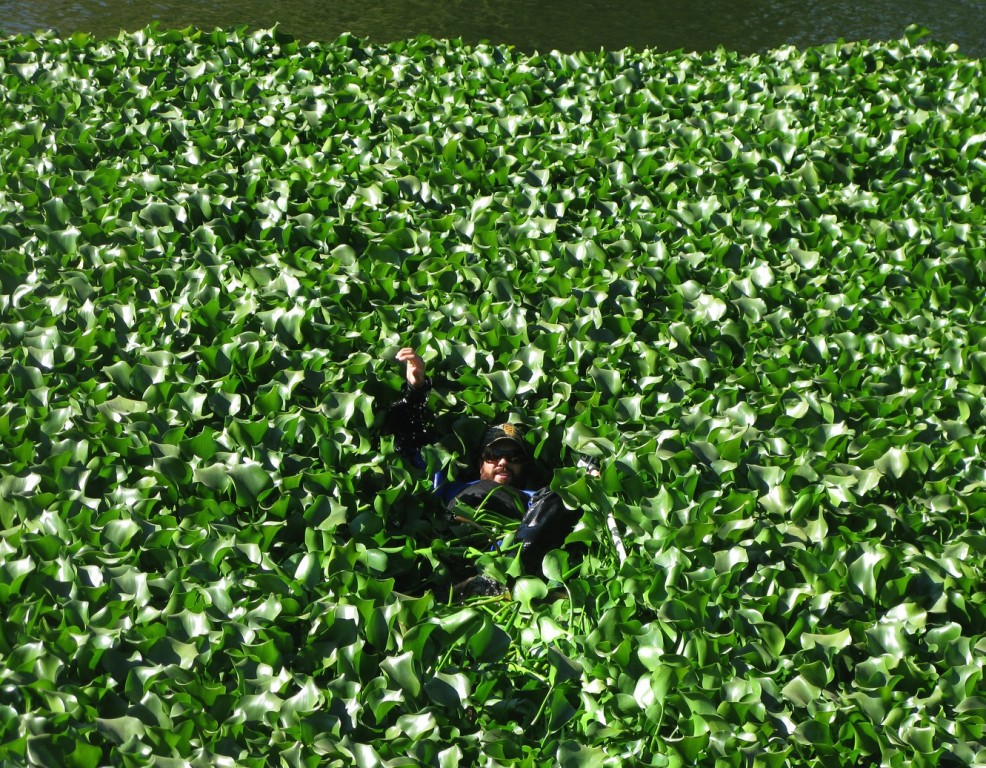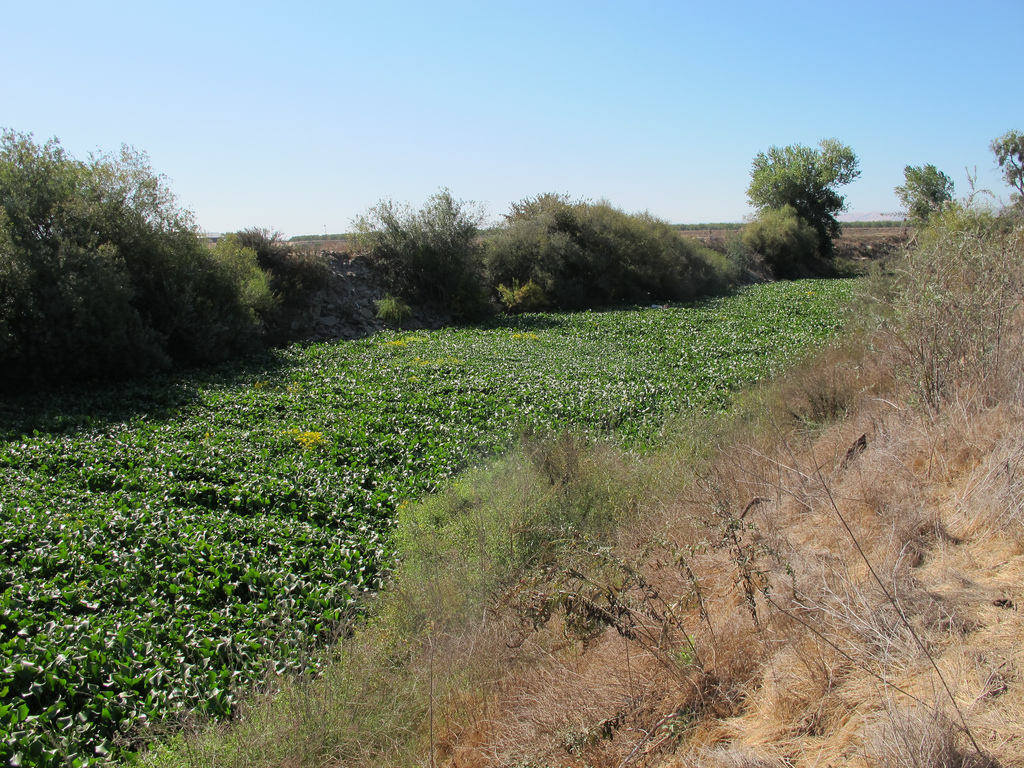Monday December 16, 2013
Physical removal is perhaps the most effective method for short-term control of water hyacinth in small bodies of water, yet the high cost of mechanical removal limits its application in most infested waterways. Control of the species’ abundance through harvest for practical uses is limited, and though water hyacinth meets the criteria for bioenergy production (as a perennial, abundant, bio-degradable, and high-cellulose plant), technical and logistical challenges imposed by the plant’s high water content prevent commercial-scale harvesting for methane production (Ndimele et al. 2011). In recent years, biological control measures involving Amazonian weevils, moths, and fungal pathogens have been implemented in various locations to successfully reduce the abundance of hyacinth to levels that are no longer problematic, while other bold (and perhaps less than realistic) ideas of releasing pig-sized, semi-aquatic South American rodents with a penchant for consuming water hyacinth remain to be tested.
While both Chinook salmon and water hyacinth are widely distributed, the Central Valley may be the only place where these two species collide. The presence of hyacinth can alter the composition of native plant and animal communities, and associated changes in invertebrate abundance affect the food base available to rearing fishes in the Delta (e.g. Toft et al. 2003). However, the effects of hyacinth on salmon are unknown, likely due to the relative rarity of such interactions. How returning Chinook salmon may react to “green tunnels” created by the free floating plant, as observed stretching from bank to bank on the lower Tuolumne River earlier this fall (pictured above), remains to be investigated.
This post featured in our weekly newsletter, the Fish Report. You can subscribe to the Fish Report here.


